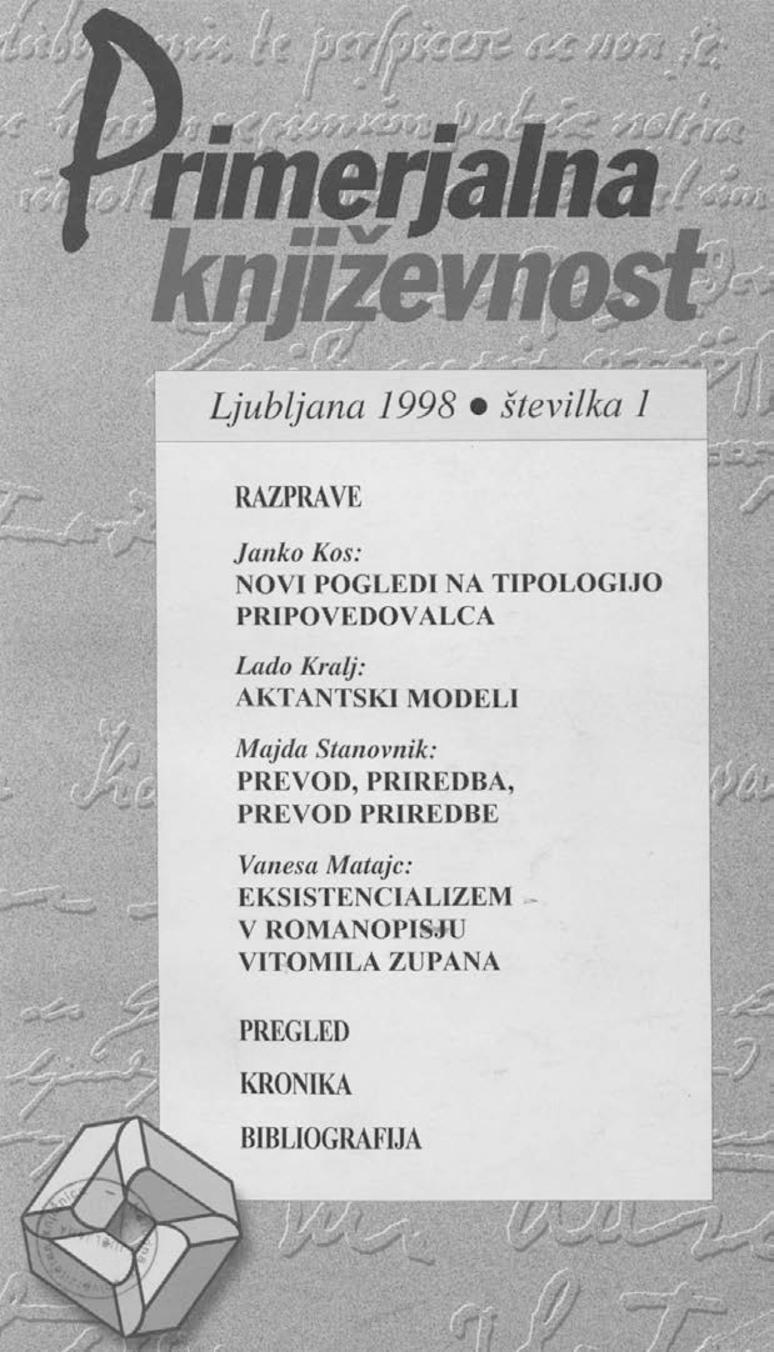Novi pogledi na tipologijo pripovedovalca
Ključne besede:
literarna teorija, literarna tipologija, teorija proze, pripovedna tehnika, naratologija, pripovedovalec, Stanzel, Franz K.Povzetek
Razprava izhaja iz Stanzlovega tipološkega modela, ki postavlja na isto raven tri tipe pripovedovalca: avktorialnega, prvoosebnega in personalnega. S kritično analizo ta model razstavi, nato pa raziskuje možnost treh različnih tipologij pripovedovalca, od katerih je vsaka tričlena in postavljena na drugačno raven: prvo-, drugo- in tretjeosebni pripovedovalec; avktorialni, personalni in virtualni; lirski, dramski in epski pripovedovalec. Ob analizi teh nizov opozarja na njihove možne povezave in stičnosti, pa tudi na tipološke razlike.Literatura
ANDREOTTI Mario, Die Struktur der modernen Literatur (Bern–Stuttgart, 1990).
GEIGER Heinz – Haarmann Hermann, Aspekte des Dramas (Opladen, 1978).
BOOTH Wayne C., The Rhetoric of Fiction (Chicago, 1961).
FRIEDEMANN Kale, Die Rolle des Erzählers in der Epik (Leipzig, 1910).
KAHRMANN Kordula – Reiss Gunter – Schluchter, Manfred, Erzähltextanalyse (Frankfurt ob Majni, 1991).
KAYSER Wolfgang, »Das Problem des Erzählers im Roman«, v: The German Quarterly, 19, 1956.
KAYSER Wolfgang, »Wer erzählt der Roman?«, v: Kayser W., Die Vortragsreise (Bern, 1958).
KOS Janko, Morfologija literarnega dela (Literarni leksikon 15, Ljubljana, 1981).
KOS Janko, Roman (Literarni leksikon 20, Ljubljana, 1983).
KOS Janko, Literarne tipologije (Literarni leksikon 34, Ljubljana, 1989).
KOS Janko, Lirika (Literarni leksikon 39, Ljubljana, 1993).
KOS Janko, »Vprašanje o dramatiki«, v: Zbornik ob sedemdesetletnici Franceta Bernika (Ljubljana, 1997).
LÄMMERT Eberhard, Bauformen des Erzählens (Stuttgart, 1955, 19704).
LUBBOCK Percy, The Craft of Fiction (London, 1921).
LUDWIG Hans-Werner, Hrsg., Arbeitsbuch Romananalyse (Tübingen, 1993)
ROSSUM-Guyon Françoise van, Critique du roman (Pariz, 1970).
STANZEL. Franz K., Die typischen Erzählsituationen im Roman (Dunaj–Stuttgart, 1955).
STANZEL Franz K., Typische Formen des Romans (Göttingen, 1964, 19768).
STANZEL Franz K., Theorie des Erzählens (Göttingen, 1979).


